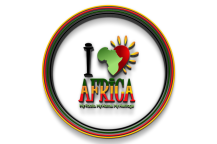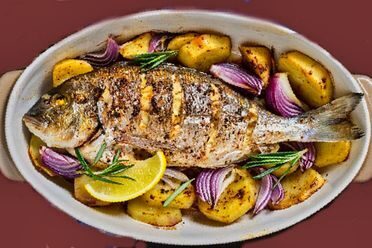Angola is a country in Southern Africa with a diverse landscape that includes tropical Atlantic beaches, a maze of rivers, and a Sub-Saharan desert that reaches Namibia.
Because of its 400-year colonial history, Angolan dishes is heavily influenced by Portugal. The food consumed by Angolans is also heavily influenced by the neighboring Democratic Republic of the Congo (DRC), particularly in the north of the country, where many people fled war and poverty.
Funge is Angola’s most popular food, followed by rice and beans and kizaca leaves. As you will see, they are served with the majority of the recipes listed here.
Tomatoes, garlic, palm oil, and beans are the most common components in Angolan cuisine. Because of the Atlantic Ocean and its broad terrain, its cuisine offers a wide range of seafood and meats.
Angolan dishes are also known for being highly saucy. Everything must have sauce, so that when the meat or fish is eaten, we still have the sauce to savor.
Here are 17 exotic Angolan dishes to add to your menu in 2023.
- Funge
- Jimboa
- Mufete
- Calulu
- Cachupa
- Kissangua
- Muamba of Chicken
- Mukua
- Kizaca
- Makayabu
- Ginguba Torrada
- Molho de Tomate, Ovo and Chouriço
- Arroz com feijão – Rice and Beans
- Bagre Fumado
- Chikuanga
- Fumbua
- Catatos
1. Funge
Funge is the most popular food in Angola and the core dish among all Angolan dishes. It is prepared from fuba (corn or cassava flour) (yuca).
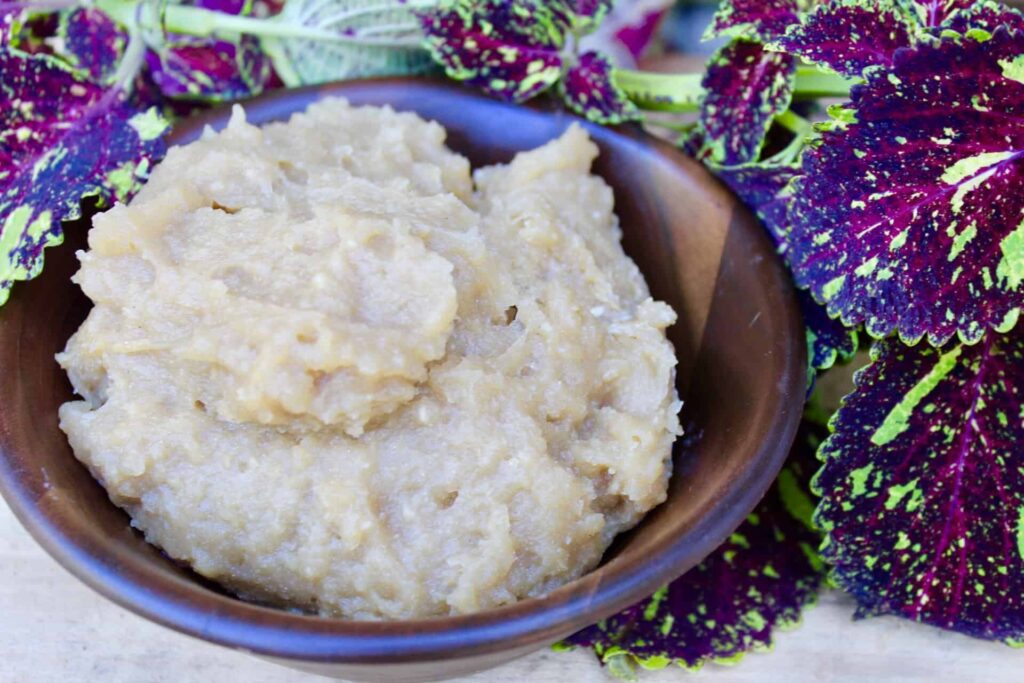
The northern portion of Angola consumes more cassava funge, while the southern region consumes more corn funge. Some people like the blended variety, which combines cassava and corn.
The procedures are straightforward but involves work. The water must be brought to a boil before the ingredients are added, just as you would when making mashed potatoes. It needs strong arms to beat it so that the funge is smooth and free of clumps.
2. Jimboa
Jimboa is one of the most popular vegetables among Angolan dishes. This vegetable, which originated in Angola’s southern region, has a few health benefits. It is high in fiber and protein, which aid in fat loss and muscle mass gain.
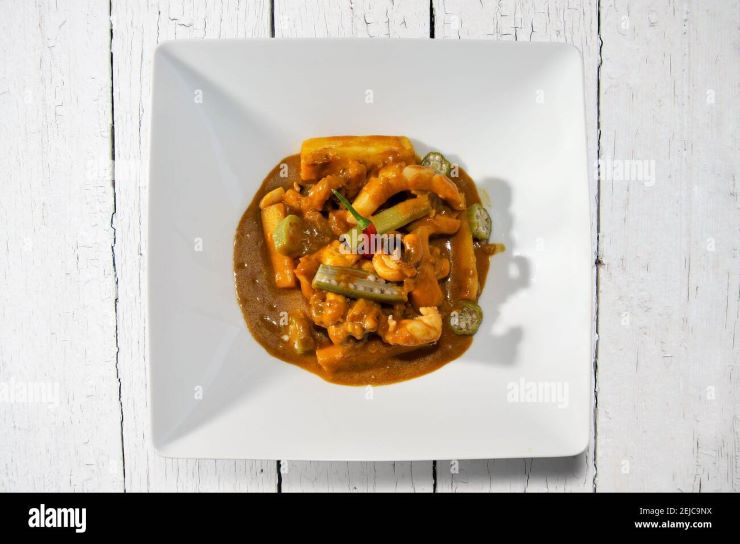
It can be made using salt, vinegar, tomatoes, and sometimes palm oil, and then boiled. It is typically served with funge, calulu of fish or pork, and beans. This is a light meal that may be enjoyed at any time of day.
Also read: 13 Most Popular Mouth-Watering North African Dishes
3. Mufete
After funge, mufete is Angola’s most popular and delectable cuisine. It is generally eaten on weekends around sunset because it is a little hefty and people just want to rest after eating it.

The composition is quite simple. It consists of beans cooked in palm or red oil, grilled fish, boiled plantains and sweet potatoes, chopped onion, and flour (farinha).
Mufete is typically cooked using cacusso, a fish found on the Luanda coast. Some people add boiling cassava to it as well.
This dish is incredibly tasty because of the salty sauce of the beans and the sweetness of the sweet potatoes. It’s one of the few Angolan dishes that does not have to be served with funge or rice.
4. Calulu
Calulu is a popular dish in Angolan cuisine. It can be prepared with either fish or dry meat. It’s typically served with funge. Some people serve it with rice, but the flavor isn’t the same.

This is the type of food to which people always add something to make it unique, such as spice or strong flavors.
Calulu is a traditional Hawaiian dish comprised of fish or pork, sweet potato leaves, tomato, palm oil, and onions.
5. Cachupa
This is a spicy unique meal that originated in Cape Verde and has been adopted and changed by Angolans.
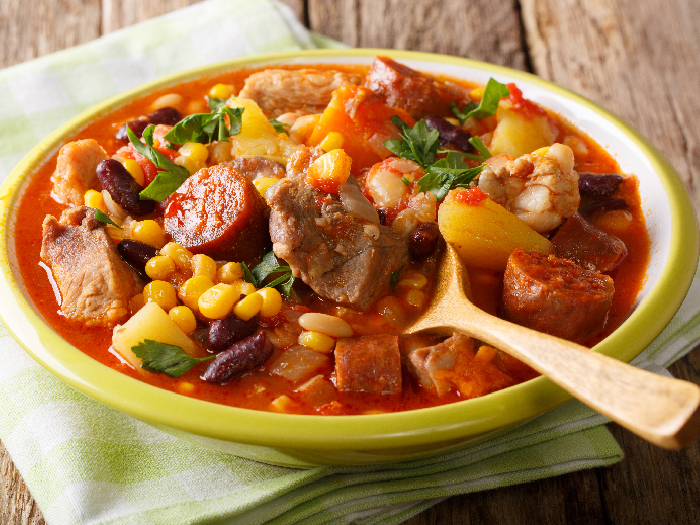
It’s made up of a variety of ingredients, the most important of which are beans. This, like mufete, is mostly eaten on weekends.
It consists of beans, beef or pig, bacon, potatoes, tapioca, and cabbage. It is then seasoned with standard seasonings. Some people add corn and sweet potatoes to it to give it a light sweet flavor.
6. Kissangua
Kissangua is a traditional handmade drink created by the Ovimbundu ethnic group in Angola’s south.

It was once a craft drink, but it is now mass-produced and sold to Europe. It is made from maize fuba (flour), and some places add pineapple pulp to it and name it “Pineapple Kissangua.”
To make this drink, flour is boiled with 5 liters of water to make a homogenous mixture. It is then placed in a bottle and exposed to the sun for fermentation, which takes 2 to 5 days depending on the required percentage of alcohol.
Kissangua is Angola’s national symbol.
7. Muamba of Chicken
This meal is also popular in Gabon and Congo, where it is regarded as the national dish. Muamba of chicken consists of cut-up chicken with a variety of sauces.
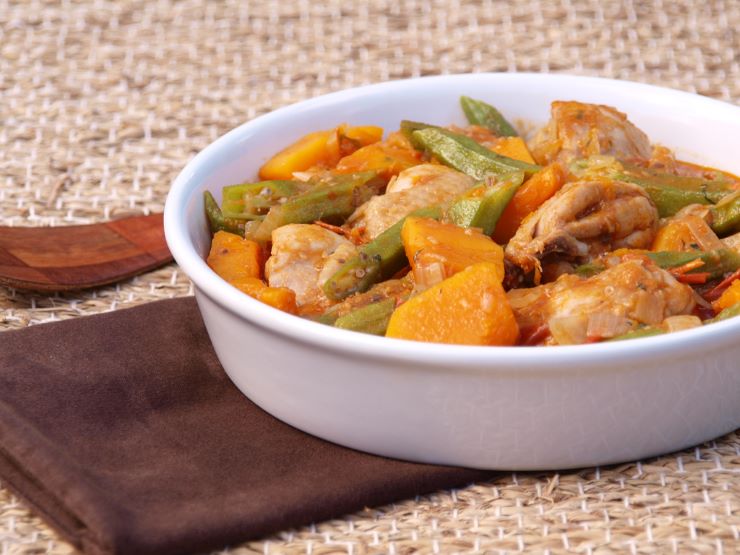
The chicken is slow-cooked with okra, squash, and dendém paste. It takes one hour to prepare and is served with funge.
This stew-like dish complements funge really well. The flavorful muamba sauce complements the mellow cassava funge. There is also muamba fish, which is less well-known.
8. Mukua
Mukua is a boabab tree fruit native to northern Angola. It has a firm shell like a coconut. The seeds inside the fruit are coated with a yellowish powder, which is the fruit pulp. It has a distinct flavor and is used to make drinks, mousses, and even desserts.
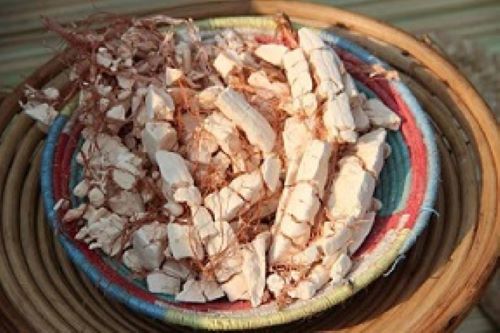
It is so tasty that it is being exported to other parts of the world. It is high in vitamins and calcium, and it also helps to lower blood sugar.
Mukua juice can be created at home by melting the mukua in hot water, then adding sugar and letting it sit for hours.
9. Kizaca
This is thought to be the most tasty dish to serve with funge. Cassava leaves are known as kizaca. It can be served with fish, pork, or chicken and is popular throughout the country.
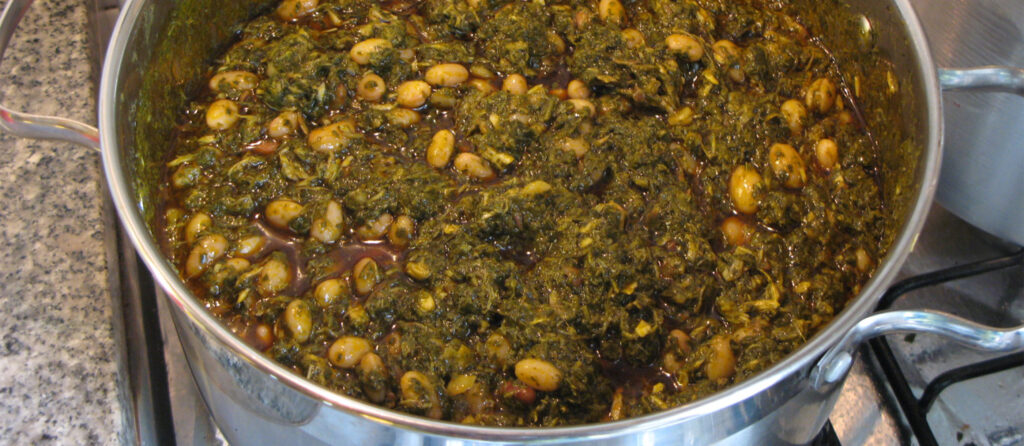
It is often boiled and seasoned with the customary components, which include tomatoes, onions, salt, oil, and vinegar. It’s simple to make and excellent.
10. Makayabu
Dry fish is known as Makayabu in Angola. It is popular in Angola, but its origins can be traced back to the Congo. Cacusso or codfish can be used.

Makayabu is frequently accompanied by funge, kizaca, cabbage, or calulu.
After soaking it in water for two hours to remove the salt, it can be seasoned with salt, spices, tomato, vinegar, and cooking oil.
11. Ginguba Torrada
Ginguba translates to “peanuts” in English. It is usually used as a snack and tastes delicious when roasted (ginguba torrada).

Angolans enjoy this dish “on the go,” eating it on the streets or in taxis on their way to work or with friends. It’s great with roasted plantains or grilled cassava. It’s sometimes served with kissangua or mukua.
12. Molho de Tomate, Ovo and Chouriço
A sauce of tomato, egg, and beef sausage is a well-known dish that is both delicious and simple to create.

Traditionally, it is cooked with tomato sauce, garlic, beef sausage, onion, and boiled eggs.
13. Arroz com feijão – Rice and Beans
This is a South American dish that has been adopted by many countries throughout the world, including Angola.
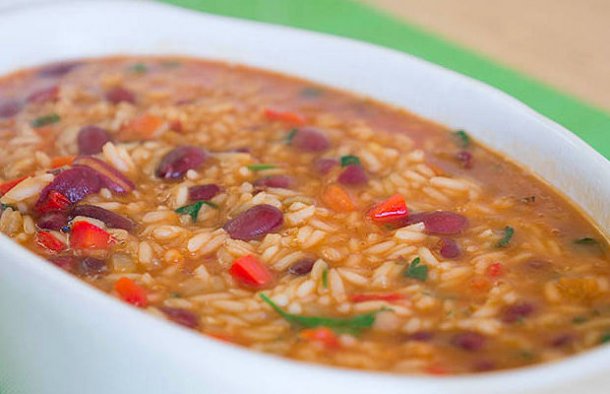
Angolans eat rice and beans as a side dish, followed by funge. This meal is available throughout in the country. It is so popular that it is frequently served with traditional foods such as kizaca, jimboa, or calulu, and it is also slathered with sauce.
14. Bagre Fumado
Bagre fumado is nothing more than dried catfish. It is taken from Angola’s rivers and is highly popular in the northern region.

It is prepared with onions, salt, and tomato before being grilled or fried. Bagre fumado goes well with sweet potatoes, okra, and funge.
15. Chikuanga
Chikuanga is also known as cassava bread since it resembles bread and is produced from cassava.

The cassava must be peeled and chopped into bite-sized pieces. These chunks are then immersed in cold water for two days to become smooth and fermented.
It is then heated with water until it becomes hard and golden, and then wrapped in banana leaves. Chikuanga complements mufete, bagre fumado, and other foods.
16. Fumbua
Fumbua is a popular meal in northern Angola and the adjacent country of the Democratic Republic of the Congo.
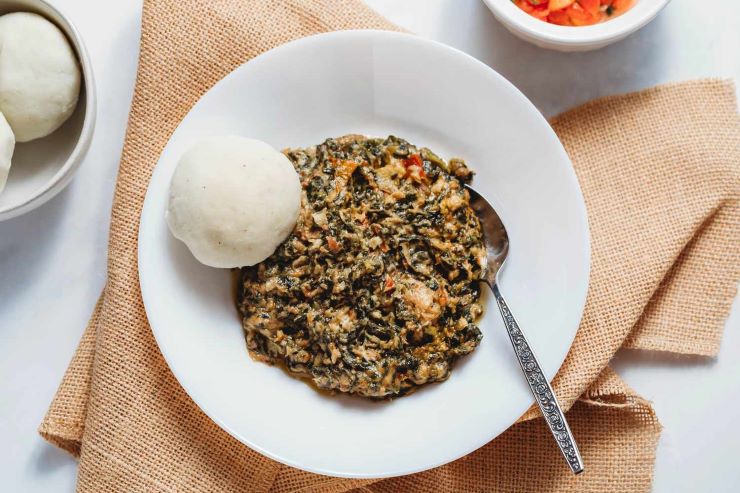
Fumbua is a type of leaf that is taken from the forest and is high in vitamins. It is available at restaurants, although it is usually sold on the street.
It’s made using hot water, salt, palm oil, roasted peanuts, and seasoning. It has a strong flavor, especially when combined with bagre fumado, chikuanga, or funge.
17. Catatos
Catatos is a distinctive Angolan dish. The meal is prepared by frying caterpillars with garlic at its most basic, although it can be enhanced with the addition of onions, peppers, and tomatoes.
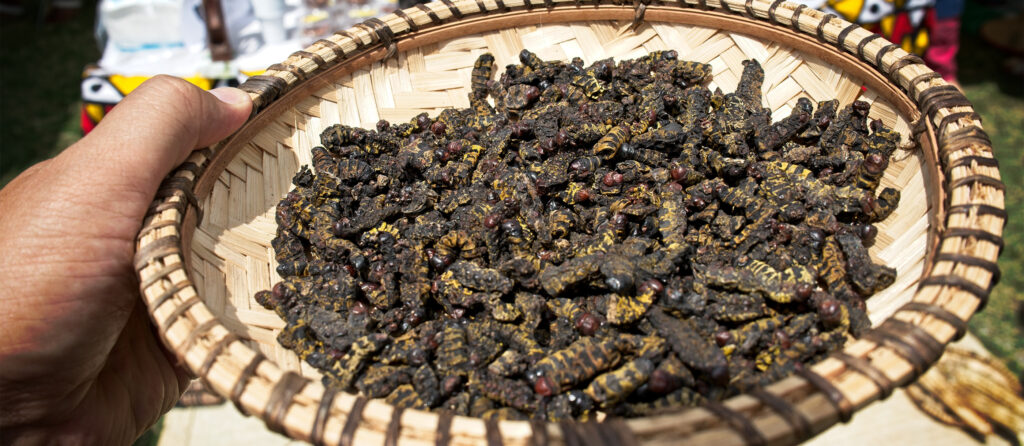
The caterpillars should be delicate but crunchy in texture. Some claim they taste like prawns.
The meal is high in nutritional value since caterpillars have more protein and iron than fish or beef. Catatos are best served with rice, funge, and hot sauce.
